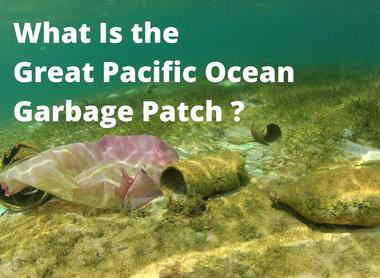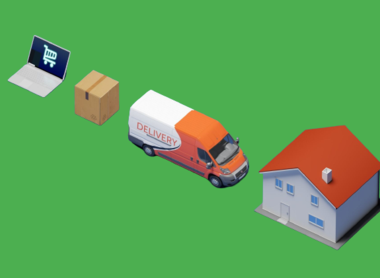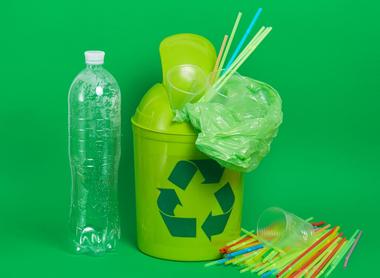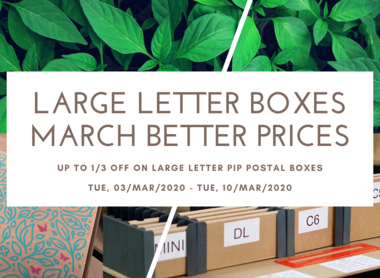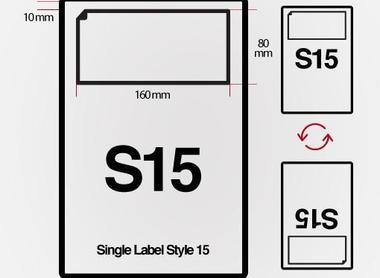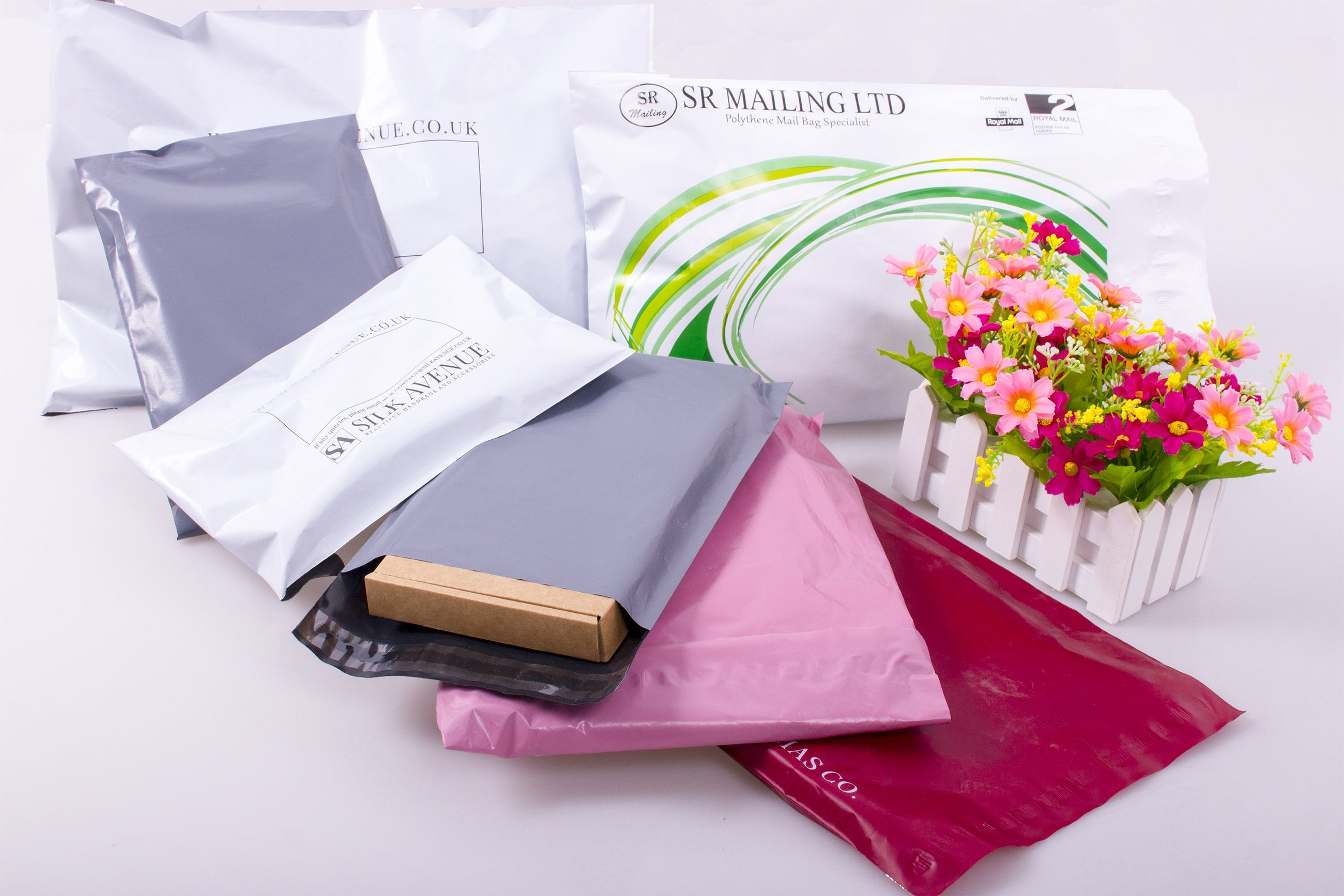Junk Mail vs. The Environment: How to Reduce The Impact
Junk mail – it is one of those everyday things that many of us consider an annoyance, and we tend to toss it straight into the recycling box without a second thought. But our recycling junk mail unfortunately doesn’t negate the impact that junk mail has on the environment – and it makes a huge impact on Earth’s available resources.

What Is Junk Mail?
Commonly known to those in the marketing industry as direct mail advertising, junk mail is marketing material that is sent out directly to an address, usually through the postal service. It is often unsolicited, but direct mail advertising is sometimes sent to individuals that are selected because they are in a certain demographic. In other cases, certain mailshots may be sent to specific neighbourhoods, or occasionally, the materials can be sent out to every address nationwide.
Junk mail may take the form of:
- Plastic mailers
- Coupon codes
- Envelopes
- Catalogues
- Leaflets
- Commercial advertising
- Pre-approved credit card applications
- Menus from take away restaurants
Direct mail advertising it isn’t just sent to customers at their home addresses though – many B2B businesses use direct mail advertising to market their products and services to other businesses too. For B2B direct mail advertising, the most common types that are used are catalogues and special offer leaflets, but postcards, letters and items with ‘useful’ free gifts are frequently used by businesses too.
Why Do Businesses Still Use Direct Mail Marketing?
Despite the massive increase in marketing options that have evolved as the internet and technology have, there are occasions that businesses may choose to use unsolicited direct mail marketing campaigns as part of their advertising strategy. There are good reasons for this too, not least because it is highly effective. It is said that even internet giant Google still use direct marketing as part of their strategy – although many references to post being sent by Google seem to originate from years ago now – but if they’re still sending offers by post, rather than online, it must be effective.
A recent US Postal Service customer and market insights study found that 50% of consumers have tried a new product, service or business within six months of receiving direct mail. That’s a massive return on investment, and a huge amount of uplift on profits for businesses. A few more statistics to illustrate why businesses continue to use direct mail marketing:
- Over 42% of junk mail recipients read, or scan every piece of mail they receive (and 41% of people look forward to checking their post every day!)
- Direct mail is estimated to require 21% less cognitive effort to process than email
- Customers that receive direct mail purchase 28% more items, and almost a third more than people that didn’t receive the mailing
- Direct mail marketing provides around 29% return on investment
- 59% of customers enjoy receiving mail from brands about new products, with glossy catalogues making the biggest impression
With these types of figures, it is pretty clear to see why direct mail marketing is still a popular option with marketing professionals, despite innovative digital marketing techniques that are much lower cost, and better for the environment being available.
There are six core reasons that businesses have traditionally used direct mail marketing:
It can create a positive impression of the business
Some customers – particularly those in older age brackets – prefer to open a piece of mail from a business, rather than an email, because it is something they can touch and feel. The quality of the paper, the fact that it has been addressed to them directly – whether the direct mail is a letter, a catalogue, or a simple postcard. If the mailing impresses them sufficiently, and they are interested in the service or products, it is likely to form a positive impression and they’re much more likely to think of, and interact with the business in the future.
Customers remember receiving it
Although many pieces of junk mail are sent without a name, where direct mail has been personalised, it is memorable – as long as the company has the relevant information available. Consider how you’d feel if you received:
- A discount code as part of a birthday greeting
- A thank you card, with a free gift with next purchase if the card was brought in
- A welcome back code, if you hadn’t made a purchase in a while
Most of us would be more likely to at least look on the company website to see if there was something you could buy at a price we were happy to pay if we received this type of offer through the post.
Direct mail doesn’t have to contain a personalised offer to be effective either – simply adding a personal message, or signature may be enough. Customers are much more likely to think of a business if they have received a piece of marketing that has been personalised – it shows that the business cared enough to bother to try and impress them, which contributes to that positive impression.
Direct mail marketing has longevity
The average piece of advertising mail is kept in a household for around 17 days on average – which means that if a business sends out catalogues, there is more of a chance that customers will keep them, and reach for them to see if the business carries a certain product. Once they see the item they want in the catalogue, they have the phone number, store location, and other contact details right there, so they are likely to take action.
It isn’t just B2C businesses that B2B businesses have traditionally sent out copies of their latest catalogues to other businesses, and we know of a number of businesses that still refer to catalogues from their suppliers rather than using websites to search. Indeed, there are plenty of businesses that have dated catalogues on their shelves – how often they are reached for is unknown, but the recipient kept those catalogues for a reason.
There is also more opportunity for sharing with direct mail items than with promotional emails, which often get filtered out and lost. If the customer has bought a product from a company that a friend admires, then there is a good chance that the original customer will give a flyer or leaflet to their friend – increasing brand awareness further.
Some customers don’t see, or respond to digital marketing
For certain customers, getting them to interact with your business using technology may not be an option. If the target customer for a business is unlikely to use the internet, or a smartphone, then online marketing isn’t going to be an effective way of reaching them to increase brand awareness, or to build repeat custom.
Customers aged between 45 and 54 are the most likely to respond to direct mail, and older groups are more likely to respond more positively to direct mailing. This means that ad spend ROI for these customers is more likely to increase if direct mail is a significant part of the advertising strategy.
It can be creative
In an effort to be sustainable, some businesses are producing packing slips and direct mail items that are less likely to be thrown out – such as printing a piece of abstract art on one side, or a black and white photograph on a postcard. This is encouraging customers to think positively of the business – and even to frame such mailings, providing even further longevity, and ensuring the business is remembered. When that postcard sized mailing that is tucked onto a noticeboard or by a desk gets commented on, the name of the business gets mentioned – further increasing brand awareness.
Direct mail can be a way for a business to get creative. Businesses that have images that didn’t make it onto their website or their social media, can make use of them in their direct marketing, meaning that greater value can be gained from a photoshoot. Even if direct mailing is more functional than beautiful, it can still be striking, and means customers are more likely to remember it for all the right reasons.
It complements digital marketing activity
Used strategically, direct mailing can complement digital marketing activity perfectly. Adding a company website URL, and a QR code, alongside a special discount code means that customers are more likely to visit the website to look for items that they have considered before. And of course, once they are on the website, there’s a good chance they will browse other categories, and make a purchase.

How Much Does Junk Mail Cost?
Despite the fact that direct mail marketing is so effective, in the UK, spending on direct mail advertising has reduced significantly over the past year or so, from around £2.13 billion in 2013 to around £910 million in 2020, with a decline of 6.4% expected in 2021. The upfront cost that is involved is almost certainly a contributing factor – more customers can be reached at lower cost with digital marketing – but showing sustainability is almost certainly another consideration for businesses that are targeting ethically conscious customers.
While this reduction in spend on direct mail marketing is a step in the right direction in terms of the environment, when you think how much paper and ink almost a billion pounds would create, there is clearly a lot of work to be done.
What Impact Does Junk Mail Have On The Environment?
Paper is the first thing that most of us consider when we think of junk mail. It is wasteful, since many mailshots are often printed on paper from newly cut down trees, rather than recycled paper – and since global deforestation is responsible for almost 20% of all carbon emissions, it is a huge contributor to global warming. But the paper isn’t the only issue to consider here. Let’s think about it:
- Some junk mail includes plastic
- There’s the environmental impact of creating, packing, and transporting the inks used
- There’s the impact of consuming the energy to actually print the materials
- There’s the impact of the packing materials to transport the mailings
- There’s the impact of the vehicle transporting the mail to the postal service, as well as the additional fuel it may take to deliver the mail in addition to other items in the delivery
Further, recipients simply recycling marketing materials that they receive isn’t a completely perfect solution either – there is an impact on the environment to collect recycling, and the recycling plants require fuel to be run. And even worse, in some areas, many items that are collected for recycling is simply being added to landfill because the cost of recycling is deemed to be too high and not worth the effort.

How Can Businesses Help Minimise The Impact Of Junk Mail?
It makes sense that stopping sending junk mail altogether would be a good start to help stop the impact on the Earth – but since many businesses have good reasons to continue to do so, it is unlikely to cease completely for a while. In the meantime, businesses can look to reduce the impact of their marketing by using other methods – we’ll take a look at some of these next.
Email marketing
Email marketing is often used by businesses as an alternative to direct mail advertising. It can be directed to the exact customers that they want to target, and the messages that are contained can be similar. In addition to being a much more sustainable way of sending advertising materials to customers, the cost of creating and distributing email marketing is much lower too.
Where businesses already have an email marketing list for their customers (and have obtained permission from all contacts on the list to use their information, in accordance with the General Data Protection Regulation) then cost of sending email marketing is really low. Businesses without a customer database can use email contact services to find contacts to send email marketing to.
Although email marketing is much more affordable for businesses, response rates are significantly lower – particularly where emails are sent to individuals that are not already customers for the business. This may be due to unsolicited emails being filtered by email providers, customers moving marketing email into junk folders so they don’t see them again, and so on.
Paid search ads
Paid search ads present a huge opportunity for businesses to reach exactly the right type of customer with marketing. It is possible to reach customers in a certain location, or that fit a certain demographic, and costs can be low too, since the business only pays when a customer clicks through.
Newspaper advertising
Businesses that are targeting customers in a certain location, (or within a certain field, if marketing B2B) then using advertising in local newspapers (or industry publications) can be a low cost way to reach customers. This can be a particularly useful way to advertise a local event, or want to attract customers to a store or the website. When the customer interacts with the business, it presents an opportunity to add email addresses to the company database, allowing for more targeted email marketing.
Mass marketing
Where marketing budgets are significantly bigger, then using mass market media may be an approach that can work out better in terms of the number of potential customers that will see the adverts. Using banner ads on websites, in community papers, on billboards or even on radio or TV ads may have a high upfront expenditure, but it is likely to be more extensively seen or heard, and even better, the environmental impact will be significantly lower.
Social media
There are precious few businesses today that don’t have a presence on social media – and there are a number of good reasons to do so. Maintaining social media feeds is a relatively low cost way to exhibit what a company has to offer, while using Story or Live posts allows businesses to show more of their business, in a more authentic way. Before choosing to work with a certain business, many customers will check them out both in terms of company reviews (to check that they will get the service they want) and on their social media to see if their values align with their own.
Social media also allows businesses to interact with followers, which means that they are much more likely to convert to paying customers. That’s particularly the case where businesses use the ecommerce functionality that most social media companies are starting to implement for their business users.
Mobile phone marketing
Probably the most direct way of contacting customers is to send them a text-based message – it is almost guaranteed to be seen by the recipient. There are a number of ways of sending marketing messages to mobiles, whether it is through traditional SMS, or through social media based messaging services such as WhatsApp or Facebook Messenger.
However, there’s a high unsubscribe rate for mobile phone marketing – mainly because it is pretty intrusive. Not all customers are happy about marketing messages popping up on their phone, particularly on a regular basis. Businesses that use this strategy as a tactic need to be careful not to send text messages too often to avoid losing subscribers, and to ensure that customers are still interested when they do receive a message.
One way to ensure that customers receive marketing materials for the business when they are actually interested is to develop a mobile app for the business, and use in-app messages, rather than sending texts. This allows the customer to access marketing messages when they want to. Since they are in control of when they see the marketing – they have opened the app when they want to interact with the business – there is a much greater chance that those marketing messages with result in a purchase.
Businesses can use the installed mobile app to send location-based push notifications, to offer customers special discount codes when they are in the store or nearby – which will result in a greatly improved conversion rate. In addition, using location-based notifications means the customer isn’t making an additional journey to visit the store – which is another win for the environment.
YouTube
When they want to really show off their business, many companies today turn to YouTube. While higher quality content is better on YouTube, it doesn’t have to involve purchasing a lot of expensive equipment – short snippets filmed using an existing business laptop, or a smartphone can be good enough to make a good impression. And since more information can be packed into a short video clip than can be put into a mailshot, it isn’t just lower cost and better for the environment, it is much more effective too.

How can we minimise the environmental impact of our direct mail marketing?
If the business decides to use direct mail marketing, then it should take steps to minimise the impact on the environment. Using recycled paper is a start, and only sending to the customers that are most likely to respond positively rather than to all your customers. If you’re going to be using direct mail marketing regularly, then show that you are conscious of the environmental impact. Talk about your choices of recycled paper on your website, and consider making regular donations to organisations that plant trees, such as the Woodland Trust or One Tree Planted.
What Can I Do To Minimise The Impact Of Junk Mail I Receive?
If you’re looking to minimise the environmental impact of junk mail you receive, don’t forget that the issue doesn’t just exist at home. Some B2B marketers still favour sending items like catalogues and newsletters through the post, rather than have their emails be directed to spam folders. But in reality, many of those pieces of junk mail get discarded too – whether that is in the actual bin, or in the recycling.
Note: We’re going to be talking about options that you can take in the UK, as that is where the majority of our customers are – but there are similar options available in most countries worldwide. Be sure to check what services are available in your local area, either from local governments, or if there are nationwide initiatives that you can use.
Decline marketing materials before they get to you
It is possible to stop the junk mail before it even gets to you, by telling the companies that you deal with, and by using postal services to ensure that you’re eliminating junk mail before it gets to your letterbox.
With the company
There are a number of ways in which you can tell companies that you don’t want to receive any type of post from them – starting with managing your account, to being careful when signing up for mailings, to telling the company explicitly that you don’t want to receive their mail.
Go paperless to manage your accounts
Where it is possible, choose to have your household bills sent by email and managed online. Bills are necessary to be seen by yourself of course, but often companies include a leaflet or two about their services as part of the mailing – which means an impact on the environment. By electing to manage your bills and payments online, you’ll be able to minimise the impact of those one or two (or more!) non-essential sheets of paper that get tucked in with your statements.
When you’re signing up for services, either online or in store, be sure to identify where the company is asking you if they can use your information to send you marketing materials through the post. Read each agreement carefully – you may need to tick to opt out, or tick to say that you give permission. If you want to receive marketing materials from the company – for example, because they send discount codes, or because you particularly love their products – then opt to receive marketing materials to your email, rather than by post.
Tell the company to stop sending you mail
If you haven’t engaged with a company, and want to stop receiving mail from one sender in particular, you can write to the business, or email them directly to tell them to stop. You’ll need to include your full name and address, the date, and this sentence:
“Please stop processing my personal data for direct marketing purposes in accordance with Article 21 of the General Data Protection Regulations.”
You should also state a reasonable date that by which you want the company to stop sending you post. Article 21 of the GDPR states that this should be enacted within one month.
At your door
You can also decline junk mail from senders at your door. There’s nothing to stop you having a sign on your door stating ‘no commercial leaflets’ (you can either buy these online, or make one yourself) and if free newspapers are common in your area, then you can state ‘no free newspapers’ to stop those being put through your letterbox – if you don’t want to receive them, of course. This might not eliminate the issue completely, since some determined delivery folks may ignore the signs – but they should help.
Use Postal Services to stop receiving mail
To stop many of the junk mail items being sent to you directly, you can contact your local electoral registration office and have your details taken off the Open Register. The Open Register can be purchased by organisations that are looking to send unsolicited marketing materials through the post.
While Royal Mail are legally obligated to deliver anything that is addressed specifically to you, or to ‘The Occupier’, they do offer a service that will help reduce the amount of unaddressed junk mail. It won’t stop mail that comes from the Government being delivered either, since that is an exception to the rule. The Royal Mail Door to Door service allows you to opt out of receiving unsolicited junk mail items. It takes about six weeks to implement, and your opt out lasts for up to two years. You’ll need to complete and return this form to action it.
To stop junk mail being delivered from other postal distribution services, you can register with the Your Choice preference scheme, which is an initiative run by the Data and Marketing Association.
Finally, if you prefer to not receive mailshots from charities that are fundraising, then you can register your details with the Fundraising Preference Service, which can stop not only postal communications, but also email, phone calls, and texts addressed to you personally if you prefer not to receive those.

What to do when you have received junk mail
Even if you’ve taken steps to prevent receiving junk mail in the first place, there may still be the odd piece of junk mail that gets through. If this is the case, there are a couple of steps you can take.
Return it
If you receive junk mail that has a return address on the envelope, you can return it to the sender. Simply write on the envelope that it is unsolicited post, return to sender, and pop it in the post box. You won’t have to pay to post it back (the company may need to pay costs to receive it back) and the company should understand that you don’t want to receive any further mailshots from them.
Taking this approach doesn’t mean that you’ll have any control over what the company does with the returned item though – they may simply add it to their regular rubbish, rather than recycling. So, you may decide to contact the company as we mentioned in the Tell the company to stop sending you mail section, and add the junk mail in your hand to your kerbside recycling.
Recycle it
This is a pretty obvious statement for most people in 2021. The majority of us aim to recycle as many household items as we can, wherever we are. If your recycling bin is near your letterbox, you may not even bring junk mail into the house! Be careful when you’re recycling though – if junk mail envelopes have plastic windows in them, your local refuse collection may not be able to recycle this type of mixed material, so if this is the case, be sure to separate those out accordingly.
Encourage people to copy your efforts
Once you feel that you’re getting somewhere with minimising your junk mail, talk to other people about it. Encourage your friends and family to do the same thing – unsubscribing, and using mail preference services to eliminate junk mail before it gets to you means that fewer companies will use the method. You can do this in person, share links via text or group chats, and if you’re active on social media, then talk about it there. Remind them that they don’t need to be perfect in their actions – they need to just do their best.
Plant trees
When you’re looking to minimise the effect of global warming, one thing that you can contribute to is the planting of trees. While you could fill your garden with trees, that isn’t enough to undo the years of deforestation that have been done. If you’re regularly receiving mail that isn’t useful, and you’ve taken the steps that you can in order to prevent receiving junk mail items, then you might consider making cash donations to organisations that plant trees and look after woodlands, as we mentioned before. While that is an option for some, those of us with much smaller budgets may not be able to do that.
If making financial donations simply isn’t an option for you right now, you can still make contributions to reforestation efforts by using toolbars on your web browser. Ecosia is a not for profit organisation that has a toolbar and search engine has helped over 125 million trees to be planted. All you need to do is to use Ecosia to make your web searches (you’ll get the same results as Google) and then search ads help to generate income for Ecosia, who then uses that income to plant trees around the world. If that sounds too good to be true, they understand that – and that’s why they publish monthly financial reports, so that you can see exactly how the money was spent, and how many trees were planted.

Our Final Thoughts
Direct marketing, and junk mail is unlikely to be eliminated completely by businesses for a long time to come, because it works so well and it can be complementary to different types of digital marketing campaigns. In many cases, it is seen directly by the customer that the business wants to target – they’re holding the message directly in their hands. However, if direct marketing is to be sent, it should be done so consciously – targeting only the customers that are likely to respond, and use materials and inks that minimise the impact on the environment.
As a customer, if you’re ready to take a stand against the impact that junk mail has on the environment, then starting by eliminating it from our homes and workplaces is a relatively straightforward action to take, as it doesn’t take a huge amount of effort. Remember, reducing our impact on the environment doesn’t mean that a few of us doing everything perfectly. It may not be possible for us all to carry out recycling activities perfectly, 100% of the time, but if millions of people aim for 90% perfect, 90% of the time, it has a huge impact. If we all do our best to reduce wastage and unnecessary use of materials then the planet will benefit.
Last Updated on June 22, 2021







